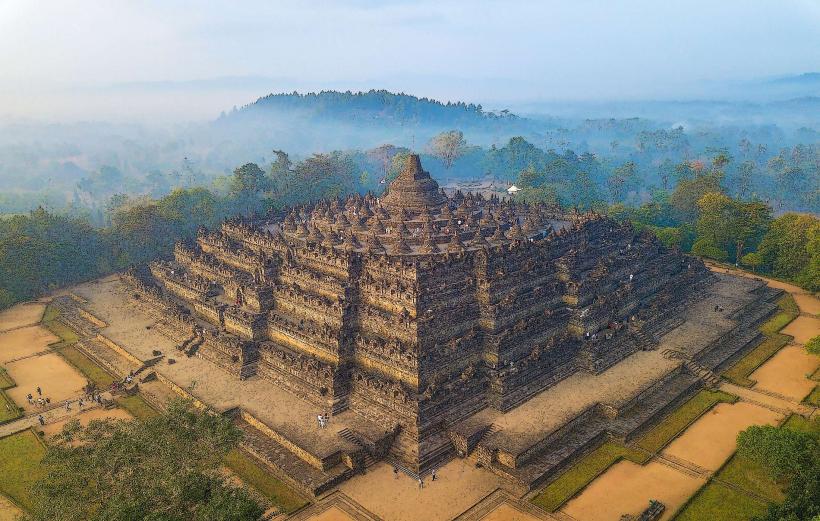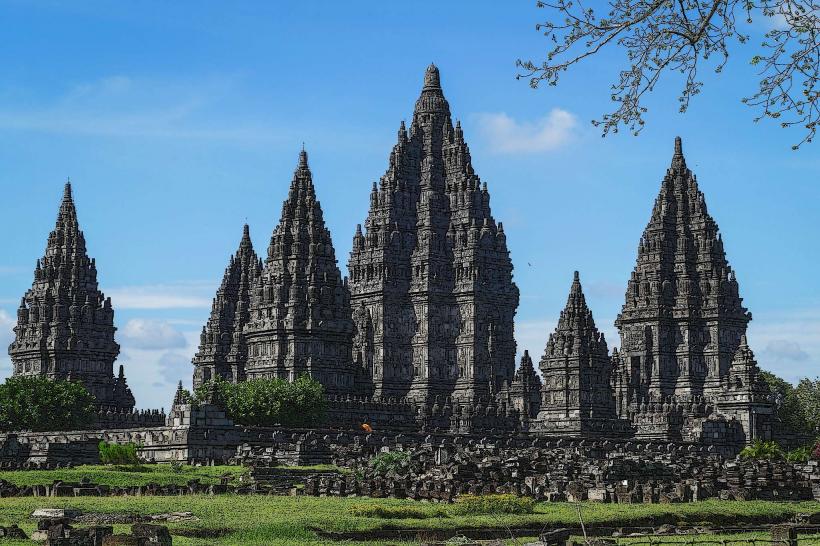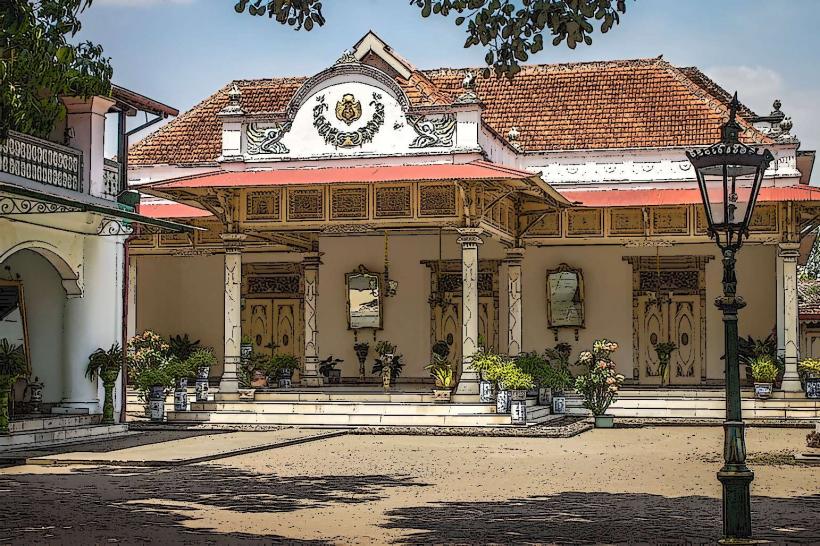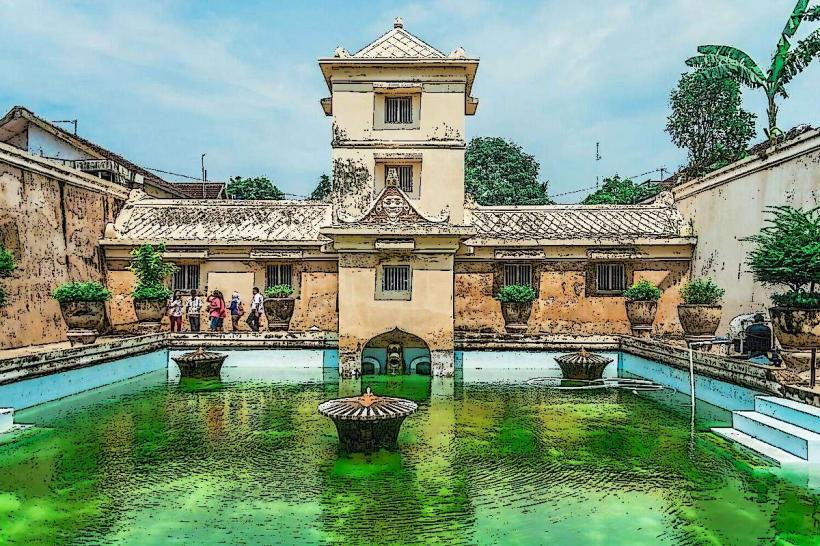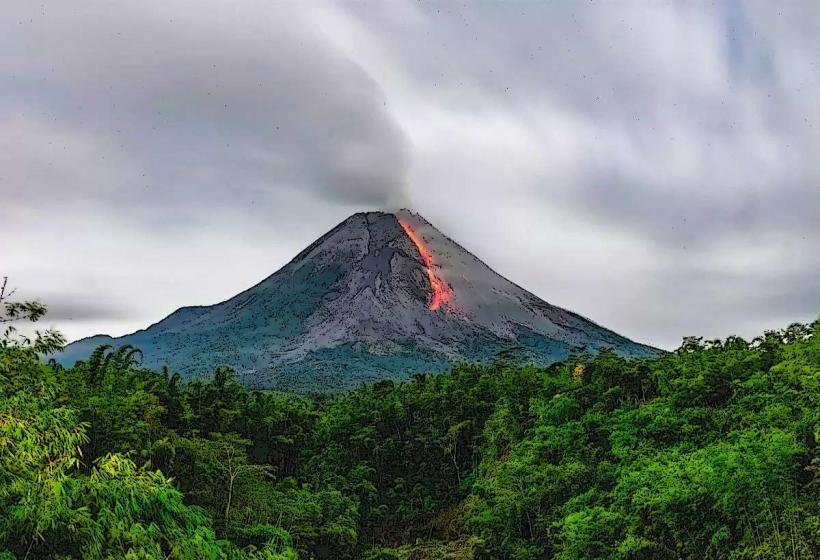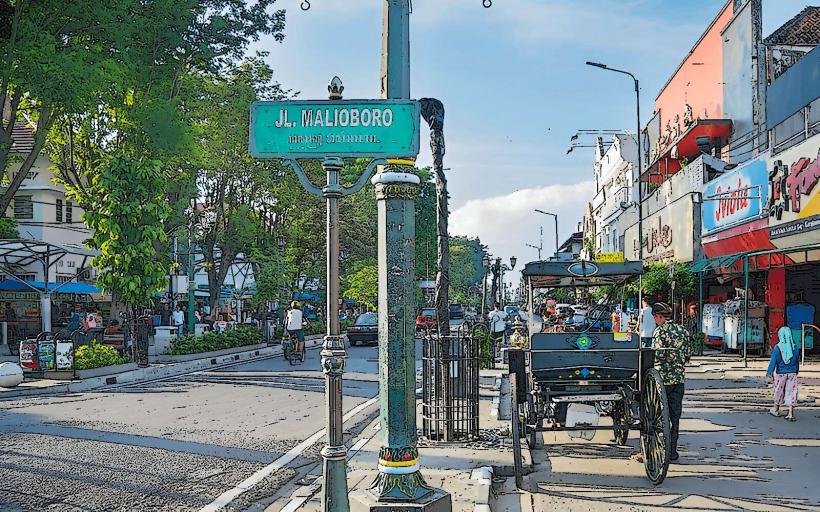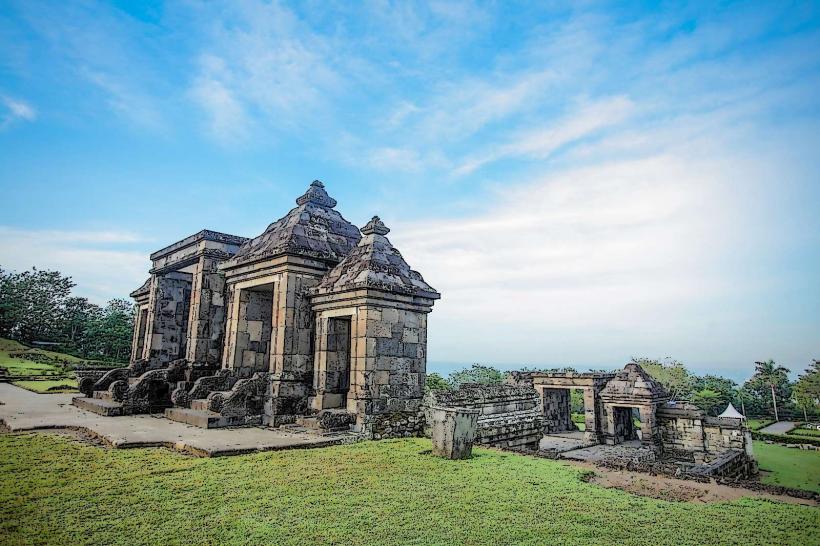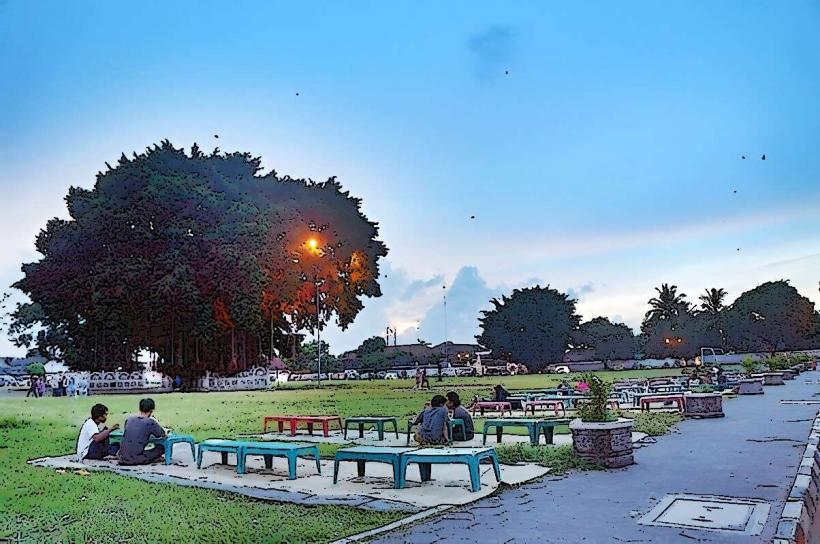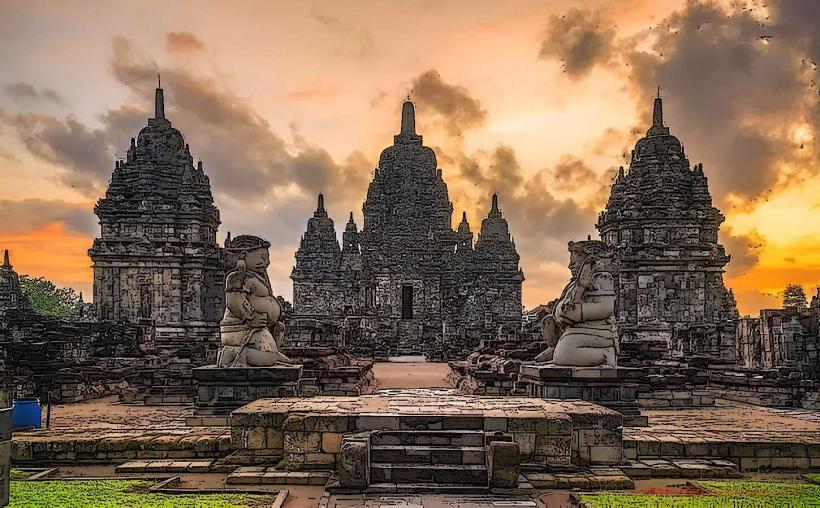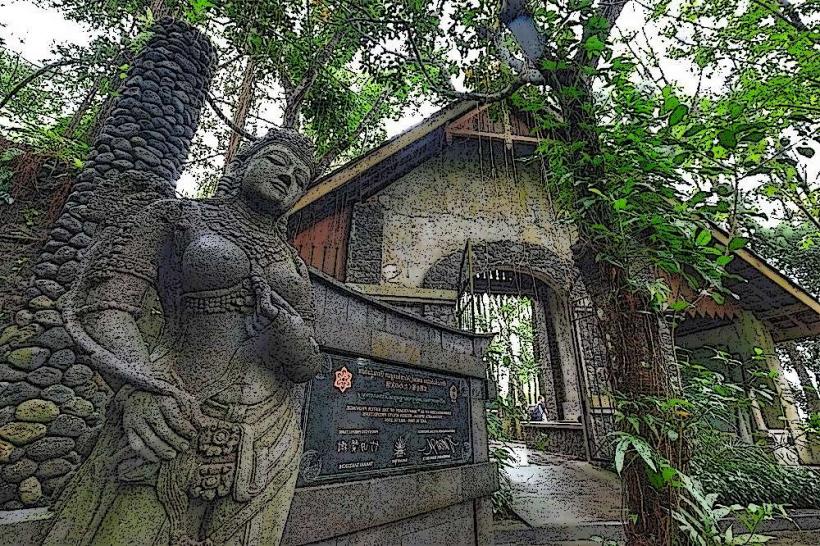Information
City: YogyakartaCountry: Indonesia
Continent: Asia
Yogyakarta (often called Jogja) is a special region and a cultural hub on the island of Java in Indonesia. It is renowned for its rich history, traditional arts, and proximity to some of Indonesia's most significant historical and cultural landmarks. Below is a detailed overview of Yogyakarta:
Geography and Climate
- Location: Yogyakarta is located in the south-central part of Java Island. It is bordered by Central Java Province to the north, east, and west, and the Indian Ocean to the south.
- Special Region Status: Yogyakarta is a special administrative region in Indonesia, governed by a sultan who also serves as the governor, making it unique in the country.
- Climate: Yogyakarta has a tropical monsoon climate, with a rainy season (November to March) and a dry season (April to October). Temperatures typically range from 24°C to 32°C (75°F to 89°F) year-round.
History
Yogyakarta has a long and rich history, playing a central role in Indonesia's cultural and political development:
- Early History: Yogyakarta’s history dates back to ancient Javanese kingdoms. It was part of the powerful Hindu-Buddhist kingdoms of Mataram and later became a major center for Islamic learning.
- Mataram Sultanate: In the 18th century, Yogyakarta became a prominent kingdom after the Mataram Sultanate split into the Yogyakarta Sultanate and the Surakarta Sunanate (Solo).
- Colonial Period: During Dutch colonial rule, Yogyakarta maintained a degree of autonomy. It became a stronghold for resistance during the Indonesian struggle for independence.
- Independence: Yogyakarta played a key role in Indonesia's fight for independence. It served as the temporary capital of Indonesia from 1946 to 1949 when Jakarta was under Dutch control.
Culture
Yogyakarta is often called the "soul of Java" due to its rich cultural heritage:
- Traditional Arts:
- Wayang Kulit: Traditional shadow puppet performances that tell stories from Hindu epics like the Ramayana and Mahabharata.
- Batik: Yogyakarta is a major center for batik, a traditional Indonesian textile art. The city is famous for producing hand-drawn and stamped batik.
- Gamelan Music: Traditional Javanese orchestra featuring instruments like gongs, metallophones, and drums.
- Javanese Dance: Classical dances, such as the Serimpi and Bedhaya, are performed in royal courts and cultural events.
- Language: The primary language spoken is Javanese, with Indonesian used as the official language. The Javanese language in Yogyakarta is often spoken in a refined form, reflecting the city’s royal heritage.
- Religion: The majority of residents are Muslim, but Hindu, Buddhist, and Christian communities also exist, with many cultural traditions blending religious influences.
Tourism and Attractions
Yogyakarta is one of Indonesia's top tourist destinations, offering historical landmarks, cultural experiences, and natural beauty:
Historical and Cultural Sites
- Borobudur Temple (UNESCO World Heritage Site):
- Located about 40 km northwest of Yogyakarta, Borobudur is the world’s largest Buddhist temple, built in the 9th century. It features intricate carvings and a breathtaking sunrise view.
- Prambanan Temple (UNESCO World Heritage Site):
- A magnificent Hindu temple complex dedicated to the Trimurti (Brahma, Vishnu, and Shiva). It is known for its towering spires and evening cultural performances.
- Kraton Yogyakarta (Yogyakarta Palace):
- The royal palace of the Sultan, this is the cultural heart of Yogyakarta. Visitors can explore its traditional Javanese architecture, museums, and cultural performances.
- Taman Sari Water Castle:
- A former royal garden and bathing complex, showcasing beautiful architecture and underground tunnels.
- Kotagede:
- Known as the silver-making district, Kotagede is a historic area with narrow lanes, traditional houses, and silver workshops.
Natural Attractions
- Mount Merapi:
- An active volcano located near Yogyakarta, popular for trekking and jeep tours. Visitors can explore lava fields and learn about past eruptions.
- Parangtritis Beach:
- A scenic beach on the southern coast, known for its black volcanic sand and mythological significance as part of the Javanese spiritual world.
- Kalibiru National Park:
- A picturesque area offering eco-tourism activities and panoramic views of the surrounding hills and reservoirs.
Art and Craft Markets
- Malioboro Street:
- The most famous street in Yogyakarta, lined with shops selling batik, handicrafts, souvenirs, and local food.
- Beringharjo Market:
- A bustling traditional market where visitors can buy batik, spices, and Javanese snacks.
Cuisine
Yogyakarta is known for its distinctive and flavorful Javanese cuisine, characterized by sweet and savory flavors. Popular dishes include:
- Gudeg: A signature dish made from young jackfruit stewed in coconut milk and palm sugar, often served with rice, chicken, and boiled eggs.
- Bakpia Pathok: A sweet pastry filled with mung bean paste, a popular souvenir.
- Nasi Kucing: Small portions of rice served with side dishes, often sold at angkringan (street food stalls).
- Wedang Ronde: A traditional warm ginger drink with sweet glutinous rice balls.
Education
Yogyakarta is often referred to as the "City of Education" due to its numerous universities and academic institutions.
- Gadjah Mada University (UGM): One of Indonesia’s top universities, known for its research and academic excellence.
- Other Institutions: Yogyakarta hosts many other universities and colleges, attracting students from across Indonesia and abroad.
Economy
- Tourism: Tourism is a major economic driver, with millions of visitors coming annually for Yogyakarta’s historical, cultural, and natural attractions.
- Agriculture: The surrounding areas of Yogyakarta are known for rice farming, as well as the production of fruits, vegetables, and spices.
- Handicrafts: Batik, silverwork, and pottery are significant industries, contributing to both the local economy and exports.
Transportation
- Air Travel: Yogyakarta is served by Yogyakarta International Airport (YIA), located in Kulon Progo, about 40 km from the city center.
- Railways: The city is well-connected by train to other major cities in Java, such as Jakarta, Surabaya, and Bandung.
- Local Transport: Becaks (pedicabs), andong (horse-drawn carriages), buses, and motorbike taxis are common modes of transport within the city.
Challenges
- Overtourism: Popular sites like Borobudur and Prambanan face issues of overcrowding, prompting efforts to limit visitor numbers.
- Traffic Congestion: The growing population and tourist influx have led to traffic issues in urban areas.
- Environmental Concerns: The region faces challenges related to waste management and conservation efforts, particularly near natural and cultural heritage sites.
Conclusion
Yogyakarta is a city that seamlessly blends its ancient heritage with modern development. Known for its royal traditions, vibrant arts, and historic landmarks, it offers visitors a unique glimpse into Javanese culture. With its deep-rooted history, thriving tourism, and educational institutions, Yogyakarta remains a key cultural and intellectual hub in Indonesia.

